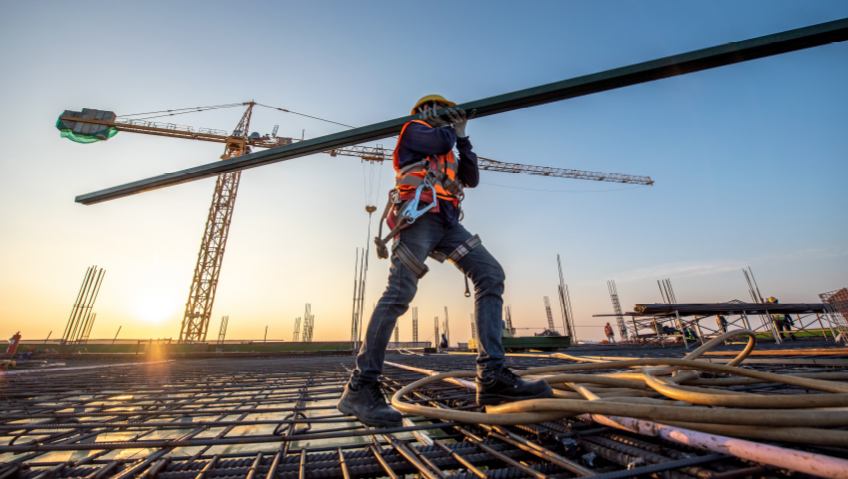Rick Perin, co-founder of DPI Construction Management in Toronto, Canada has a lot of good things to say about his senior leadership team and the women who make it stand out, like Jessica Child, Director of Corporate Services. “Jessica is a force within commercial construction in the GTA. Jess approaches any scale mandate with zeal and a commitment to success that is second to none,” he told the Financial Post about her new appointment as director.
Child first joined the company in 2013 as a Project Manager where she quickly gained a reputation for attention to detail and client-first commitment to service that distinguished her in an industry that is not known for communication or forecasting realistic project timelines. She is an expert in relationship-building and diversity, making the most of the “cultural and experiential differences amongst project stakeholders,” the Post reports.
“For our clients, a commercial office renovation can be a daunting task, so I approach each project with empathy, professionalism and active engagement,” she told them. “It’s often a matter of balancing wants versus needs during space planning, design and budgeting, which is navigated with years of technical experience, and well-established relationships in the industry.”
A recent study by global management consultants McKinsey & Company found that companies with diverse leadership teams including women were 21 percent more likely to be more profitable than the average.
Heather Tankersley, co-founder of Tankersley Construction in Rancho Cordova, California, says that women excel at certain job duties at construction companies, particularly in project management.
“We [women] have the ability to multitask, process all the details and really execute,” she told Builder Trend magazine. “I’m biased, but I think female project managers are so good at that and so good at being able to balance all the personalities that might be in the room between the owner, architect and superintendent from the field. There’s plenty of room at the table for more female project managers.”
The DPI team has banked on its great communication services for clients, creating spaces for high-profile businesses like LinkedIn, IBM Canada and HarperCollins publishing to amalgamate four branches into one impressive downtown Toronto office.
And you could say that Jessica Child is a shining example of what the DPI mandate is all about. Head to the company’s website and the top banner says it outright: “Diversity drives innovation.” In fact, DPI is the first commercial construction company to join the Canadian Centre for Diversity and Inclusion, a consulting firm that helps employers and HR professionals adopt more inclusive hiring and training practices.
This focus is playing out across all business sectors, including construction, where frontrunners like DPI are promoting inclusion, diversity and equity within their workforces and suppliers.
As Kate Reeder, DPI’s Manager of Culture & Marketing sees it, “Construction is an industry that has a long history of being led and dominated by men at every level within an organization. However, our inclusive culture sparks innovation, motivates employees, fosters team commitment and in turn, drives the entire company forward in our mission to always strive for better project outcomes.”
Why is diversity important?
A Harvard Business Review study found that a team with a member who shares a client’s ethnicity is 152 percent more likely to understand that client than another team. As the population becomes more diverse, the customer base is also diversifying. Understanding customers is critical, and if you have team members who all share the same background and views, your team won’t benefit from understanding the cultural differences behind decision-making and behaviour.
“What is necessary is to listen to your customers: understand their needs, expectations and jobs to be done, and design an experience that meets those needs,” says Annette Franz, founder of CX Journey, a customer experience strategy consulting firm. “The same goes for your employees.”
As well, McKinsey and other thinktanks have developed pretty compelling business cases to show that diversity is not just about being a good corporate citizen—something that consumers generally are paying more attention to—it’s also a significant competitive advantage and driver for growth.
Part of that growth has to do with tapping into new thinking. Multiple voices from traditionally under-represented populations in construction, including women, new Canadians and Indigenous people, bring different perspectives that can lead to new ideas, new services and new products.
That’s needed, because things are changing, and the same-old, same-old isn’t sustainable when we look at the industry’s impacts on the environment, the technologies now available, and the new expectations about how buildings and communities should function.
“Having different opinions can mean better problem-solving on construction crews,” Karen Sheldrick, General Manager of the Niagara Construction Association, told the Canadian Construction Association. “It’s the right thing to do and it’s important for the industry moving forward. Diversity promotes creativity and enhances problem-solving.”
That movement to workplace diversity is happening, Child says. “There has been a noticeable shift over the last decade between generations as the so-called ‘changing of the guard’ continues. Women will always battle these industry biases internally, externally or both.
But I am extremely encouraged through my interactions with the industry’s next generation.”
Which brings us to labour and the one challenge businesses can’t ignore: the aging population and retirement of skilled tradespeople. How are construction companies going to stay in the game without employees?
Estimates suggest that by as soon as 2027, 21 percent of the construction labour force will be older than 65. The Canadian Federation of Independent Business says the number of unfilled jobs in the sector in Canada outpaced all other industries and the national average in the first quarters of 2019.
BuildForce Canada, formerly the Construction Sector Council, reports that 261,000 industry veterans will retire in the next 10 years, but the industry is expected to only hire 221,300 new recruits, leaving a shortage of almost 40,000.
When you factor in the roughly four percent increase in labour demands, the industry in Canada is going to need about 80,000 more people than it currently expects. Plus, there’s the challenge of training and apprenticeships that can be a long process to get people ready for the jobsite.
In this context, retaining the current workforce and attracting new people to trades and other roles in construction will be the life raft for businesses to compete.
Also consider that Canada reached its largest number of newcomers ever welcomed to the country in 2022—431,645 new permanent residents, surpassing the previous record from 2021.
“It is a testament to the strength and resilience of our country and its people,” Minister of Immigration, Refugees and Citizenship Sean Fraser said of the achievement in a recent release. “Newcomers play an essential role in filling labour shortages, bringing new perspectives and talents to our communities, and enriching our society as a whole.”
Maybe the most important takeaway for industry, according to McKinsey, is that inclusion goes a long way to boost employee satisfaction and reduce conflicts. The result is a big payoff: improved collaboration and loyalty, higher employee retention and an environment that is more attractive to high performers. Game-changing.






